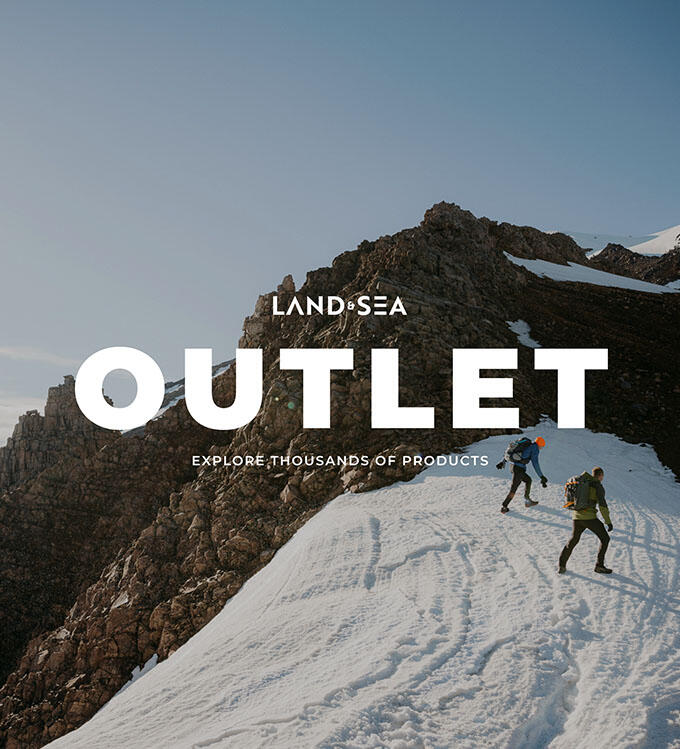Deciding on what Fly Fishing Waders to purchase can be an arduous process, some have even likened it to trying to walk upriver, against its flow. To help, we have pulled together and broken down all the variables so that you can spend more time wading through waters rather than through the plethora of often useless and brand-specific information out there. So let’s mend the line, set the hook and sink our teeth into it to help you answer the question – how to choose the best pair of fly fishing waders.
Below is the list of topics we have waded through so that you get to spend more time riverside:
• Chest Waders
• Wading Pants
• Wading/Guard Socks
At Land & Sea, we understand that buying a pair of Fly Fishing Waders can be a costly exercise. Therefore, the information within this buying guide is designed to help you understand the benefits & features of our waders within different pricing tiers to give you the confidence that you are investing your well-earned money in the right pair of Fly Fishing Waders. All right, time to boot up and get into it.
There are three main options of Fly Fishing Waders that we will be covering in this buying guide: Chest Waders, Wading Pants & Wading/Guard Socks. But to decide which wader to go for, you need to understand what waders will best suit your preferred style of fly fishing.
Freshwater Fly Fishing can generally be broken down into three styles: nymphing, dry fly, and wet lining. Although you can have success fishing any of these styles throughout the year, seasonality most certainly dictates when you’ll be most successful at each style. Here in the North Island of New Zealand, you’ll be most proficient when nymphing and wet lining during the cooler winter months as the spawn occurs. Whereas dry flying starts to come into its own during the warmer summer months as our insect populations hatch and the fish surface feed on floating insects.
Quite naturally, Chest Waders will offer more protection from the colder air and water temperatures that we experience during winter months. Therefore, if you’re looking for a pair of Fly Fishing Waders for nymphing or wet lining during the winter spawn, you’ve narrowed down Chest Waders as the wader style you require. The other significant benefit to Chest Waders over the other options is that their extra length allows you to wade out further and fish deeper pockets of the river when water levels are higher during the winter months. The best examples of chest waders are
Simms G3 Guide Waders,
Simms Freestone Waders,
Simms Tributary Waders &
Patagonia Swiftcurrent Expedition Waders.
Conversely, the climate is dramatically different during the height of New Zealand’s when dry fly fishing is at its peak, therefore, you don’t need the same level of protection from the elements. This is when you’d likely consider Wading Pants or Wading/Guard Socks as your product of choice. Although you don’t strictly need either to stay warm, the beauty of these products is threefold: they stop gravel from entering your boots when traipsing around the river, they offer protection for your legs from New Zealand’s more prickly vegetative species & the neoprene stocking foot replicated your winter chest waders meaning you can use the same pair of wading boots year-round. When looking for wading pants, look no further than
Simms Freestone Wading Pant or
Patagonia’s Swiftcurrent Wading Pant. Or if you’re after a more minimal solution, then consider
Simms Wading/Guard Socks or the
Patagonia Yulex Wading/Guard Socks.
It is no secret that all waders are designed to be worn when standing in the middle of a river, therefore it goes without saying that they are all waterproof to one degree or another. The materials selected during manufacturing dictate these varying degrees of waterproofness between models. Yet it isn’t as simple as using the most waterproof material available, as increasing waterproofness is a double-edged sword. As the ability of a material to propel water increases, it can adversely affect its ability to breathe, which is vital when fishing all day, regardless of how cold it may be. This can become quite a complex space, so to keep things as simple as possible, we will be covering the waterproof rating & breathability of the following materials selected by our manufacturers: Gore-Tex, Toray, H2No & Waterproof Polyester.
At the top of the waterproof rating pyramid, you have Gore-Tex as the ultimate authority in this space. Gore-Tex, a proprietary technology developed by W.L. Gore & Associates, Delaware USA, in 1969, is renowned for its exceptional waterproof and breathable properties, making it ideal for fly fishing waders. The key to Gore-Tex's performance lies in its unique membrane composed of expanded polytetrafluoroethylene (ePTFE). This membrane features over 9 billion microscopic pores per square inch, each approximately 20,000 times smaller than a water droplet but 700 times larger than a water vapor molecule. This structure allows the fabric to block liquid water while permitting sweat and moisture vapor to escape, maintaining comfort and dryness.
Gore-Tex's waterproof rating, measured in millimeters per hour (mm), typically exceeds 28,000 mm, indicating its ability to withstand intense pressure without leaking over an extended period of time. This high level of waterproofing is crucial for fly fishing waders, as anglers are frequently exposed to water immersion and splashes. Additionally, the breathability of Gore-Tex sits at 15,000 to 25,000 g/m²/24h which ensures that waders remain comfortable during long hours of activity, preventing the build-up of sweat and reducing the risk of dampness and chills. The combination of these properties establishes Gore-Tex as the best choice of material for fly fishing waders, which makes
Simms G3 Guide Waders a hard product to go past when looking for the best of the best.
Founded in 1926 in Tokyo, Japan, Toray Industries has specialised in materials known for their exceptional waterproof and breathable properties. Like Gor-Tex, Toray's waterproof fabrics utilise innovative membrane technologies that ensure high levels of water resistance while maintaining breathability. These membranes are also designed to block water droplets from penetrating the fabric while allowing moisture vapor to escape, providing effective moisture management.The main difference is that Toray's fabrics typically feature a waterproof rating of up to 20,000 mm, still offering substantial protection against water ingress. Although not quite the same level as Gor Tex, this high level of waterproofing is still more than adequate for fly fishing waders. The breathability of Toray's fabrics has a rating of 10,000 to 20,000 g/m²/24h which also ensures that anglers stay comfortable and dry during prolonged periods of activity. The combination of these properties makes Toray's materials an excellent choice for fly fishing waders, providing reliable performance and comfort when in the most challenging of fishing environments. If looking to strike a balance between performance and price, then Simms Freestone Waders & Wading Pants Toray finish might just be the solution for you.
Patagonia’s H2No fabric is a proprietary recycled polyester waterproof and breathable fabric designed to compete with the likes of Gore-Tex and Toray fabrics. Developed by Patagonia, H2No aims to provide high-performance protection for outdoor activities, ensuring durability, waterproofness, and breathability.
The most significant difference between H2No technology and the likes of Gore-Tex & Toray is that it undergoes rigorous testing, including a "Killer Wash" to simulate long-term use and ensure performance standards are met over the lifetime of the product. The waterproof ratings of H2No fabrics typically range between 10,000 to 20,000 mm, making them highly waterproof, though not as high as Gore-Tex, which starts at 28,000 mm. The breathability ratings of H2No fabrics range from 12,000 to 15,000 g/m²/24h, which is still more than adequate for fly fishing waders.
When compared to Gore-Tex, H2No provides a more cost-effective option without significantly compromising on performance. While Gore-Tex is known for its exceptional durability and superior breathability due to its ePTFE membrane with billions of micropores, H2No fabrics still offer reliable protection and comfort in various conditions. When compared to Toray, H2No offers a balance of waterproofness and breathability. Although Toray slightly outranks those of H2No off the shelf, H2No offers a level of confidence through its rigorous testing, providing you with peace of mind that it will live up to advertised standards over time as well as being made from recycled materials, making it the more sustainable option.
If you’re the type of person who values proven performance backed by rigorous testing, coupled with an unwavering focus on sustainability, then it’s going to be hard to go past Patagonia’s Swiftcurrent series. Their
Expedition Waders,
Ultralight Backcountry Waders &
Wading Pants offer many wading solutions for the conscious consumer.
Some waders simply advertise that they are made from Waterproof Polyester. This is because it is a costly exercise to get the material’s breathability & waterproof rating certified. Ultimately removing this step of the manufacturing process saves the consumer money, however, it doesn’t provide the same level of confidence that can be required when stepping into a new pair of waders. Regardless, as it states, these materials are both breathable & waterproof, we simply cannot quantify the level to which they compare and perform.
Simms Tributary Waders are made with waterproof polyester and therefore offer an entry-level wading solution for those looking for their first pair of waders.
Apologies for how technical we ended up getting there, as you can see, it is quite easy to get stuck in the weeds. Therefore, we have simplified what we have just covered in the below table to make it easier to digest before moving on.
| Material |
Waterproof Rating(mm/24h) |
Breathability (g/m²/24h) |
| Gor-Tex |
28,000 |
15,000-20,000 |
| Toray |
20,000 |
10,000-15,000 |
| H2No |
10,000-20,000 |
12,000-15,000 |
| Waterproof Polyester |
Variable |
Variable |
Now that we have covered the most complex part of this topic, we can talk about durability. As we’ve outlined, the main purpose of wader materials is waterproofness and breathability, meaning they all have similar durability. What you’re looking for when considering wader durability is how many layers of fabric have been incorporated during manufacturing. Simply put, the more layers, the more protection, the better the durability. This is especially the case on the lower section of the waders as it is around the legs where you are most likely to snag your waders on the nasty blackberry and matagouri bushes that often line our riverbanks here in New Zealand. Extra layers also offer the additional benefit of warmth, which can be invaluable when getting to the river at dawn when it is below freezing.
At the higher end,
Simms G3 Guide Waders offer 4-layer upper and 4-layer lower protection, whereas the entry-level
Simms Tributary Waders offer 3-layer upper & 4-layer lower. Although it might seem like not much between them, the additional layer can be the difference between remaining warm in sub-zero temps & seeing the end of several seasons.
Ultimately, for waders to be both waterproof and breathable it means that they can’t be bulletproof, so it is best to be prudent and remain focused on your surroundings when crashing through the bush. Speaking from experience, care for your waders as they are an investment that will last you years when properly looked after.
For most, packability isn’t high up the priority list when selecting a pair of waders, however, it is worth considering as there will come a time when you wish you had. The most obvious example of this is when looking to book a back-country mission. Regardless of whether you’re hiking or helicoptering into your chosen location, space and weight become vital parts of the equation.
It's quite simple, the less material incorporated in a pair of waders, the more easily it can be packed down, maximising space for the number of other essentials required for back-country missions. Therefore, if packability is higher on your agenda, we recommend considering hip waders,
wading/
guard socks, or waders without the classic neoprene stockingfoot design such as the
Patagonia Swiftcurrent Ultralight Backcountry Waders.
Simms Taco Wader Bags are a great solution if you opt for a pair of waders that prioritise benefits such as warmth & durability over packability. These bags are traditionally designed to stow your wet waders & boots after a day on the river, keeping your car dry on the drive home. However, they also double as a lightweight gear bag with plenty of room for your waders, boots, rod tube, reel & wading jacket with ample room for all your accessories too – ideal for packing into and out of all vehicles from the truck to the chopper.
Deciding on the right fly-fishing waders can be daunting, but our comprehensive guide simplifies the process for you. We've explored the three main types of waders - Chest Waders, Wading Pants, and Wading/Guard Socks - highlighting their suitability for different fishing styles and seasons in New Zealand. Chest Waders offer maximum protection and warmth, making them ideal for winter nymphing and wet lining, and Wading/Guard Socks are perfect for summer dry fly fishing. In contrast, wading pants offer a great shoulder season compromise that can still be utilised in the height of Summer & Winter as they provide flexibility and comfort without overheating.
As highlighted, the key materials used in waders are Gore-Tex, Toray, H2No, and Waterproof Polyester, each offering varying levels of waterproofing, breathability, and cost-effectiveness. Durability is another critical factor, with multi-layered waders offering better protection against New Zealand's rugged terrain. Packability is essential for those planning backcountry trips, and lighter, less bulky options can save valuable space.
By understanding all these factors, you can confidently choose the best waders for your fly fishing adventures, ensuring comfort, protection, and durability in New Zealand's diverse fishing environments. Now it’s time to get suited & booted so that you can enjoy the plethora of simply stunning rivers that New Zealand is famous for the world over.










